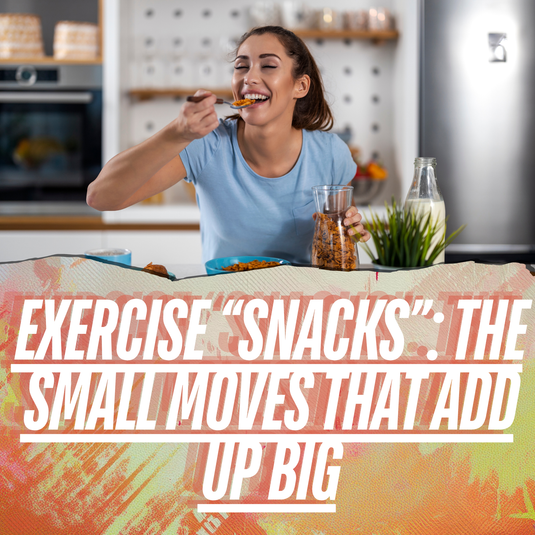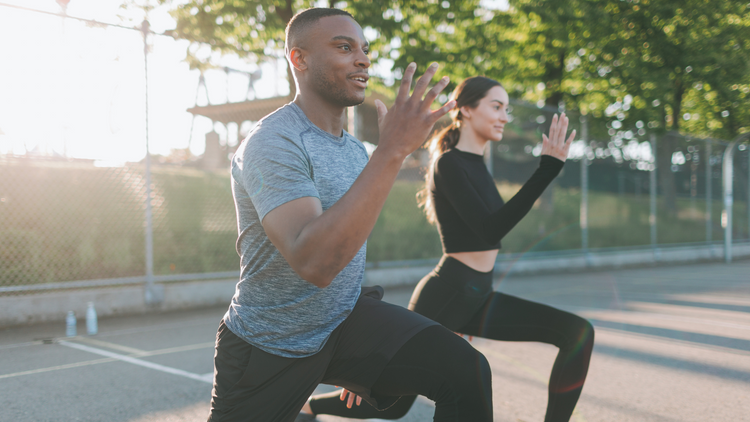What are the Benefits of Lunges?

⏱️ Estimated Read Time: 6 minutes
🧠 TL;DR
- What are the Benefits of Lunges? offers effective, accessible movements for targeted results.
- This guide is designed to help you move smarter, build strength, and stay consistent.
✍️ Summary
This post explores what are the benefits of lunges? in a way that’s actionable and easy to follow. Whether you're new to this style of training or leveling up, it includes practical takeaways for your routine.
📚 Table of Contents
Each week we field questions from our community and provide answers. If you have a question you would like to see answered, please post it in our Facebook group here. We also answer these in segments of the Living.Fit Show.
Today's Topics Cover:
-
What are the benefits of lunges?
-
What are healthy foods for kids?
-
What are some breakfast foods that lower cholesterol?
What are the benefits of lunges?
Sometimes I experience knee pain during lunges and what can I do if I experience that? Also, I feel unstable and don’t have full range of motion while doing lunges, what should I do?
Lunges are incredible for working glutes, hamstrings, quads, as well as the stabilizing muscles in the hip, groin, and core. Lunges are my favorite, as they are also a great way to improve walking, running, and strength.
Most knee pain from lunges come from too much pressure on the balls of your feet while you lunge, creating excess tension in the patellar knee tendon. This will improve as you drive more foot pressure through your heel, and slowly progress in your lunge depth, reps, sets, intensity, over time. Not doing lower body strength training is a large reason for the lack of tendon strength when anyone begins, to include lunges.
Lunge Matrix with Arm Drivers Example:
The first way to reduce knee pain during lunges is to reduce speed and depth of the lunge until the pain goes away, and then each time your work lunges your goal will be to slowly increase speed and depth of the lunge without experiencing pain. I suggest starting with the ol' 3 sets of 10 reps three times per week to improve adaptation of both tendons and muscles.
A lack of stability comes from not doing unilateral leg exercises (single leg exercises). Typically we do bilateral symmetrical exercises (two legged work) like squats and deadlifts. So moving one leg back and the other leg forward creates an uncommon platform for leg work. This lack of stability will actually begin to enhance inner and outer leg strength that so many women try to improve with machines at the gym.
The unstable feeling won't be as bad as you slow down and reduce the depth of your lunge, and it will also improve gradually as you increase speed and depth of your lunges, because your nervous system's balance will improve with your lunges.
I also highly recommend trying different variations of lunges as you improve to full depth and full speed lunges with your 3 sets of 10 reps. Lunging lateral will work your glutes even more. Reverse lunges can help you focus on driving through your heels. Walking lunges are also a fun dynamic way to perform lunges.
Lunge Matrix:
Full range of motion lunges take time to master. It is usually a combination of strength, stability, mobility, and movement awareness that must be progressed to be able to do a full range of motion lunge. Starting slow and not going as deep is still performing a lunge. It takes time for our tissues to adapt, so be patient and stay consistent...you will eventually master the lunge and reap a lot of benefits on the way.
To add range of motion, slowly add range of motion each week, so the soft tissues and the muscles involved have time to adapt to the new range. Think slow and steady winning the race, instead of trying to do it all today (we all feel this, but remember the hare never wins).
The biggest issue I see is not doing the lunge correct, and trying to do too much too soon. The issue of not doing the lunge correctly usually means flopping or bending at the waist while dropping into a lunge, whether it is a forward lunge, reverse lunge, or lateral lunge. Keep your abs tight, and try to stay as tall as possible while lunging. If you cannot come up as fast as you lower yourself down, then you probably went too deep in the lunge.
I want to get my kids on the right track early on in life. What are great, healthy foods for kids?
As a trainer, nutrition counselor, and father of three, my go to foods for kids are veggies and berries. Vegetables and berries are high in fiber, high in micro- and phyto- nutrients (vitamins, minerals, and antioxidants), and they are easy to pack in little snackable containers. Most kids that don't like veggies, don't like them for two reasons, they don't see their parents enjoying them, and their parents quit offering them veggies from the first time they refused them. That being said, my kids have watched my wife and I enjoy veggies like carrots, broccoli, celery, peas, green beans, bell peppers, and leafy greens since they were born. We also had them try all of these veggies from when we could grind them up, to when we were slicing them for lunch, snacks, and dinners. The same thing goes for raspberries, blackberries, blueberries, strawberries, and huckleberries. Now my kids get to learn about how these berries and vegetables don't make them tired and cranky like sugary foods, and they help them improve eyesight, brain function, muscle growth, bone strength, and the digestive process. We also do fun things like make food faces with them, which makes it fun to eat them for a whole new reason, and they typically ask us if they can eat their veggies or berries, instead of the other way around.
I have heard a lot of people say that breakfast is the most important meal of the day, is there anything I should not eat for breakfast? What are some breakfast foods that help lower cholesterol?
Foods with added sugar like granola, yogurt, and breakfast bars may lead to blood sugar problems when not taken in moderation. Also, highly processed breakfasts like sausages, deli meats, even vegan proteins are high in sodium and additives which may contribute to blood pressure problems. Lastly, doughnuts, pancakes, and waffles are high-fat baked goods that are high in transit and cholesterol. They are related to dementia, heart disease, and other metabolic problems.
To control cholesterol among adults, the best way to address this is to eat and do everything in moderation - whether you are doing exercise or eating. You don’t have to limit yourself with food and feel deprived, you just have to make sure that you are only taking in foods at the right serving portions. Always check the suggested serving sizes of food products and keep your daily meals in right amounts by following the Dietary Guidelines. As for exercise, 20-30 minutes of cardio and strength workouts, 4-5 times a week, is enough to get your body active and strong.
The best breakfast combination to lower cholesterol is to combine wholesome carbohydrates, lean protein and fiber in your breakfast. A bowl of oats with almond milk topped with berries is a classic combination. You can also have a slice or two of the famous avocado toast topped with almonds or nuts, then eat fresh slices of fruit or freshly-squeezed fruit juice along with it. Fruit smoothies with coconut yogurt is a quick, healthy breakfast to also consider.
Want more guidance? Check out our Weekly Dumbbell Workout #1.
📝 FAQs
How often should I do these exercises? +
2–3 times per week is a good starting point for most people.
Do I need equipment? +
Many of these can be done with just your bodyweight or a single kettlebell or dumbbell.
Can beginners do these routines? +
Yes! These movements are designed to scale with your fitness level.










